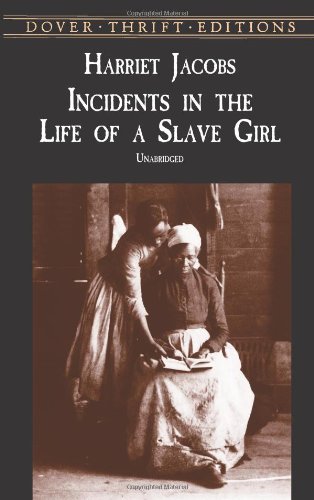Before reading this week's assignments, I began to think about how much controversy there is around homework, no matter the ability or language levels of students. In my short time in the classroom, I have worked in a school where we were told we had to give homework every night, and now I work in a school where homework is frowned upon. Both schools were on extended school day, but both had a very different view on what was appropriate for students to be working on outside of school.
The school which mandated homework got to the point that our Principal was having us submit our homework assignments so that he could see that we were giving students work outside of class. Teachers began to provide push back because we thought it was too much for students, especially for our middle school students, because that means they would have homework from 14 different teachers since we were on a block schedule.
In my current school, the philosophy is that students should not need homework outside of the school day because if we are providing meaningful work in our classes, we should know where our students are and that they should only be reading their free choice novels for outside work.
So, what is the answer, especially for ELL students?
"Homework provides students with opportunities to practice, review, and apply knowledge....homework is an effective means of extending student learning beyond the school day," (Hill, 2006.)
I think that this quote is important to keep in mind when we are creating homework assignments, because unless assignments are purposeful and meaningful, is it necessary to ask students to complete the tasks?
For ELL students, it is necessary that we are providing plenty of opportunities to apply the knowledge and skills we are teaching them in class, but it should not be busy work. By giving students meaningful work that truly supports their knowledge and language acquisition, we are giving them opportunities to practice necessary skills in real world application. With that being said, we want to give students the change to practice reading, writing, speaking, and listening in authentic ways, not just have students complete worksheets. By providing students more "real world" homework, it also gives parents the opportunity to participate in their students learning, and be apart of their students learning.
However, before we can assign the homework to our students, it is the job of teachers, schools, and districts, to conduct the following for ELL families (Hill, 2006):
- Research the culture of students backgrounds and experience with formal education in their previous country.
- Found out the educational customs and expectations of both the parents and students.
- Provide parents with their legal rights in the United States when it comes to education; this also needs to include their legal obligation and what your schools grading system, (ie: What does it mean to have Standards-Based grades?)
- Identify the students and parents prior exposure to the English language, even if the student was born in the United States
- Connect families with the community liaison and leadership for events in the school and community, especially those designed for ELL students
Once these norms and systems have been established for families, it is important for teachers to be instructed on what is meaningful and purposeful homework. If schools have an ELL population are going to expect students to be completing work outside of school, the work needs to be meaningful for not only the student, but the families they going to be practicing with at home.
In order to ensure that students are successful with homework, whether they are an ELL student or not, there are four suggestions from Classroom Instruction That Works that I believe all teachers and school need to keep in mind when it comes to homework practices:
- The amount of homework assigned to students should increase as they progress from elementary school through high school.
- Parental involvement in homework should be minimal.
- The purpose of homework should be identified and articulated clearly.
- Feedback should be provided on homework assignments.
In addition to these homework practices, I also found that the recommendations made by the same text, Classroom Instruction That Works in regards to homework from the classroom are necessary for all teachers to remember:
- Establish and communicate a homework policy.
- Design homework assignments that clearly articulate the purpose and outcome.
- Feedback should be varied.
So the answer is...
The amount of homework students should receive is based on the needs of your students. We cannot identify a one size fits all approach to homework, but students need to feel prepared in confident with what they are learning about. Homework should be something that comes in to continue the learning in your classroom in authentic ways. However, if students are in the pre-production or early production of their language acquisition, the work that students should be working on should be directed toward vocabulary and grammar skills and should be focused on including their families in this work. If students are in the intermediate and advanced stages of acquisition, homework should simply be used to improve on their academic language, (Hill, 2006.)
To guide your own reflection on whether or not the work you are providing is beneficial, no matter the skill level of your student, you can reflect on the following criteria created by the U.S Department of Education:
- Does this assignment:
- Review and practice what we have covered in class?
- Get ready for the next day's class?
- Explore more on a subject than we can cover in class?
- Extend learning by applying skills students already have?
- Teach students to use resources, (libraries, computers, websites, etc.)?
- Integrate learning by applying different skills to a single task, (book reports, project, etc.)?
Furthermore, the U.S Department of education provides how much times students should spend on homework. Their recommendations on how much homework students should have daily, and that just depends on the grade level of the students. You can see the recommendations below:
- Kindergarten through Second Grade: 10-20 minutes of homework each school day
- Third through Sixth Grade: 30-60 minutes of homework each school day
- Seventh through Ninth Grade: Varies from night to night
So no matter the age of the student, or the amount of time the government recommends, the one key piece we must remember, is, if it does not improve our students, or is not truly worth our time to provide feedback to our students on, then we must ask ourselves, "is this homework assignment necessary?"
Works Cited:
Hill, J., & Flynn, K. (2006). Classroom instruction that works with English language learners. Alexandria, Va.: Association for Supervision and Curriculum Development.
Homework: The Basics | ELL Topics from A-Z | Colorín Colorado. (2005, January 1). Retrieved February 18, 2015, from http://www.colorincolorado.org/article/20469/



